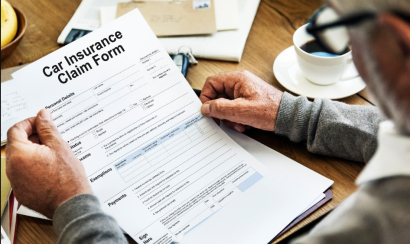Filing an auto insurance claim can be a daunting task, especially if you’ve never done it before. However, understanding the process and following a step-by-step guide can simplify the experience and ensure you receive the compensation you deserve. This comprehensive guide will walk you through each stage of filing an auto insurance claim, from the moment the incident occurs to the resolution of your claim.

1. Assess the Situation Immediately After the Incident
The moments following a car accident or any other incident can be chaotic and stressful. Here’s what you should do:
- Safety First: Check yourself and others involved for injuries. If anyone is hurt, call emergency services immediately.
- Move to Safety: If possible and safe to do so, move your vehicle to the side of the road to prevent further accidents.
- Exchange Information: Collect details from other parties involved in the incident, including names, contact information, insurance details, and vehicle information (make, model, license plate).
- Document the Scene: Take photos of the accident scene, including vehicle damage, street signs, and any other relevant details. This documentation will be crucial when filing your claim.
2. Contact Your Insurance Company
Promptly notifying your insurance company is essential to start the claims process. Here’s what to keep in mind:
- Contact Information: Use the emergency contact number provided by your insurance company, typically found on your insurance card or policy documents.
- Provide Details: Be prepared to provide specific details about the incident, including when and where it occurred, the extent of damages or injuries, and the contact information of other parties involved.
- Follow Instructions: Your insurance company may have specific instructions or forms to fill out. Follow their guidance carefully to ensure your claim is processed efficiently.
3. Gather Documentation
Before filing your claim, gather all necessary documentation to support your case:
- Police Report: If law enforcement responded to the incident, obtain a copy of the police report.
- Witness Statements: If there were witnesses to the incident, collect their contact information and statements if possible.
- Medical Records: If you or anyone involved suffered injuries, gather medical records and bills related to treatment.
- Repair Estimates: Obtain repair estimates from qualified mechanics or body shops for vehicle damage.
4. File Your Claim
Once you’ve contacted your insurance company and gathered all necessary documentation, it’s time to formally file your claim:
- Complete Forms: Fill out any required claim forms provided by your insurance company accurately and completely.
- Submit Documentation: Attach all relevant documentation, including photos, police reports, medical records, and repair estimates.
- Timeline: Be aware of any deadlines for filing your claim. Insurance companies may have specific timeframes within which claims must be submitted after an incident.
5. Assessment and Processing
After you’ve filed your claim, your insurance company will assess the information provided:
- Claims Adjuster: A claims adjuster may be assigned to your case. They will review the details of the incident, the documentation you’ve provided, and may visit the scene or inspect your vehicle.
- Evaluation: The insurance company will evaluate the extent of liability and coverage based on your policy.
- Communication: Stay in touch with your insurance company and respond promptly to any requests for additional information or documentation.
6. Resolution of Your Claim
Once the assessment is complete, your insurance company will determine the resolution of your claim:
- Payment: If your claim is approved, you will receive compensation according to the terms of your policy.
- Denial: If your claim is denied, your insurance company will provide reasons for the denial. You may have the option to appeal or negotiate.
- Settlement: In cases involving disputes or complex claims, negotiation for a fair settlement may be necessary.
7. Review and Follow-Up
After your claim is resolved, take time to review the outcome and follow up as needed:
- Review Documentation: Verify that all details in the settlement align with the terms of your policy and the information you provided.
- Feedback: Provide feedback to your insurance company regarding your experience, especially if you encountered challenges during the claims process.
- Next Steps: If further action is required, such as additional repairs or medical treatment, communicate with your insurance company accordingly.
Tips for a Smooth Claims Process:
- Know Your Policy: Understand your auto insurance policy and coverage limits before an incident occurs.
- Keep Records: Maintain records of your policy documents, contact information for your insurance company, and any communications related to your claim.
- Be Proactive: Act promptly after an incident to initiate the claims process and gather necessary information.
- Seek Assistance: If you encounter difficulties or have questions, don’t hesitate to seek guidance from your insurance company or a legal professional.
Conclusion
Filing an auto insurance claim doesn’t have to be overwhelming. By following these steps and being prepared, you can navigate the process with confidence. Remember, the key to a successful claim is prompt action, thorough documentation, and effective communication with your insurance company. In the event of an incident, prioritize safety, gather information, and trust the process outlined in this guide to help you through each stage of filing your auto insurance claim.
